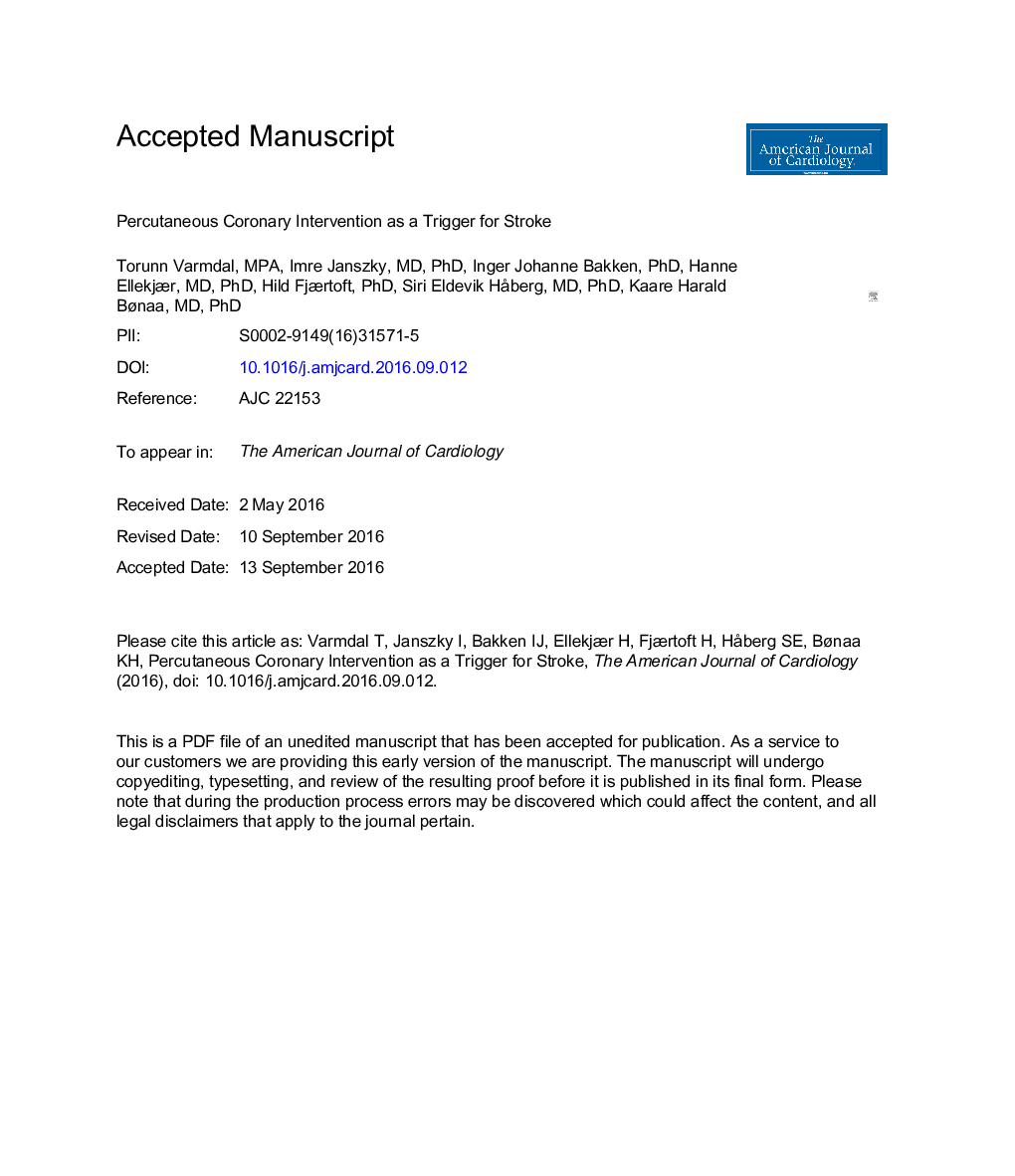| Article ID | Journal | Published Year | Pages | File Type |
|---|---|---|---|---|
| 5595490 | The American Journal of Cardiology | 2017 | 20 Pages |
Abstract
Percutaneous coronary intervention (PCI) is a plausible triggering factor for stroke, yet the magnitude of this excess risk remains unclear. This study aimed to quantify the transient change in risk of stroke for up to 12Â weeks after PCI. We applied the case-crossover method, using data from the Norwegian Patient Register on all hospitalizations in Norway in the period of 2008 to 2014. The relative risk (RR) of ischemic stroke was highest during the first 2 days after PCI (RR 17.5, 95% confidence interval [CI] 4.2 to 72.8) and decreased gradually during the following weeks. The corresponding RR was 2.0 (95% CI 1.2 to 3.3) 4 to 8Â weeks after PCI. The RR for women was more than twice as high as for men during the first 4 postprocedural weeks, RR 10.5 (95% CI 3.8 to 29.3) and 4.4 (95% CI 2.7 to 7.2), respectively. Our results were compatible with an increased RR of hemorrhagic stroke 4 to 8Â weeks after PCI, but the events were few and the estimates were very imprecise, RR 3.0 (95% CI 0.8 to 11.1). The present study offers new knowledge about PCI as a trigger for stroke. Our estimates indicated a substantially increased risk of ischemic stroke during the first 2Â days after PCI. The RR then decreased gradually but stayed elevated for 8Â weeks. Increased awareness of this vulnerable period after PCI in clinicians and patients could contribute to earlier detection and treatment for patients suffering a postprocedural stroke.
Related Topics
Health Sciences
Medicine and Dentistry
Cardiology and Cardiovascular Medicine
Authors
Torunn MPA, Imre MD, PhD, Inger J. PhD, Hanne MD, PhD, Hild PhD, Siri E. MD, PhD, Kaare H. MD, PhD,
